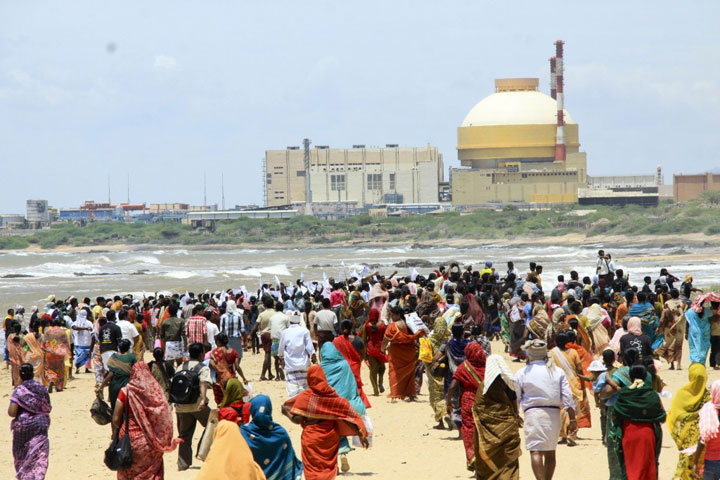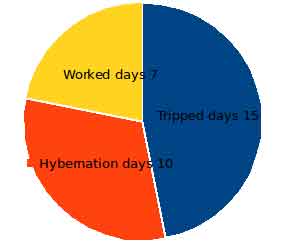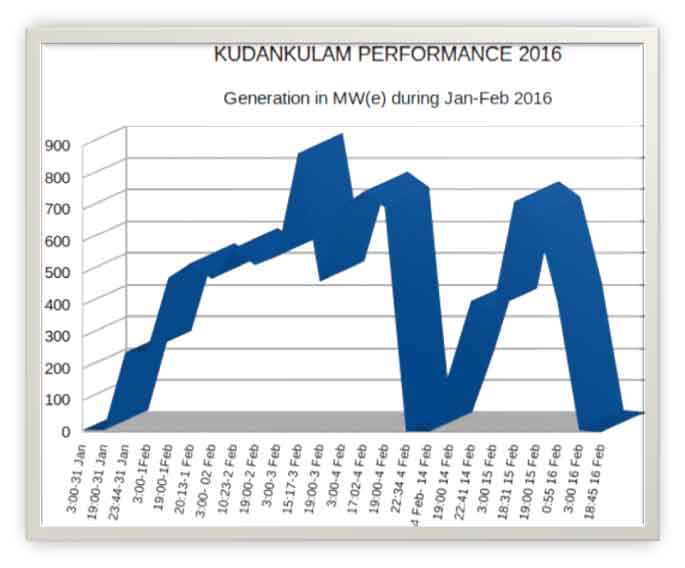Koodankulam Nuclear Reactor Tripps Second Time In February Due To Instrumental Deficiencies
By VT Padmanabhan
17 February, 2016
Countercurrents.org

The first reactor of the Kudankulam Nuclear Power Plant (KKNPP-1), a joint venture of the Nuclear Power Corporation of India Ltd (NPCIL) and the Rosatom of Russia tripped again at 18:35 hr on 16 February 2016.
The reactor was grid connected for commissioning tests on 22 Oct 2013. As the repeated attempts to clear the last commissioning test failed repeated, the NPCIL declared its commercial commissioning on 31 December 2014. A day before this, the reactor was handed over to the Indian side by the Russian side for warranty operation.
On 24th June 2015, the reactor was shut down for maintenance. After 7 months of repair and refits, the reactor was brought to criticality on 21 Jan 2016. After 10 days of hibernation, it was connected with the grid on 30 Jan 2016. However, without supplying a single unit of electricity, the unit was disconnected from the grid in the evening of the same day. After reconnection on 31st January 2016, it worked for 5 days. On 4th February, it tripped due to steam leak. The reactor was revived after 10 days on 14th February.
Two days later, it tripped again at 18:45 hr on 16 Feb 2016. The reason for the latest trip, according to the daily report of the Southern Regional Load Dispatch Centre (SRLDC) is “INSTRUMENTATION DEFICIENCIES”(1). According the report published in the newspaper The Hindu, the reactor “was stopped again following leak in a secondary circuit tube” “while the primary circuit system is working exceptionally well, the unforeseen leak in the secondary circuit tube forced us to stop power generation around 6.40 p.m. on Tuesday.” (2) According to this report, based on information provided by ‘a source’, there was no trip and no deficiencies in instrumentation either.
 According to SRLDC, the expected date of revival of KKNPP-1 is 21 February 2016. Summary data for 32 days (from 21 January 2016 – the day of criticality till 21 Feb 16) is given in the pie chart.
According to SRLDC, the expected date of revival of KKNPP-1 is 21 February 2016. Summary data for 32 days (from 21 January 2016 – the day of criticality till 21 Feb 16) is given in the pie chart.
During the first month of the second year of commercial operation, the reactor hibernated for the first 10 days after its attaining criticality, worked for 7 days in two installments and tripped twice for 15 days
Reactor trips are not uncommon events. According to the World Nuclear organization, on an average, a reactor trips once in two years, while the best ones trip once in four years. Since its grid connection, KKNPP-1 tripped for 21 times, while it worked for only 377 days. Trip rate at KKNPP is more than 40 times the global rate. The DAE and Rosatom attributed the higher number of trips at KKNPP to its state of the art I&C system. This is the first time the Kudankulam reactor is tripping for a problem in the instrumentation and control system.

The operators at Kudankulam are in a hurry. The warranty period of the reactor expired on 30 January 2015; but on that day, the reactor was still under maintenance. As the repeated attempts to make it operational during Jan 2016 failed, Rosatom has graciously extended the warranty period for another three months and the final transfer of the best “Generation-III reactor in the world” has to take place in the beginning of the second quarter of 2016. If the reactor is revived on 21 Feb 2016, as reported by the SRLDC, the operators have just 40 days left to make it operate at full power just for one day, so that the transfer can be done smoothly.
Notes:
1) http://srldc.org/var/ftp/reports/unit/2016/Feb16/16-02-2016-unit.pdf
VT Padmanabhan, a member of the Nuclear Consultancy Group (NCG) has been writing on nuclear safety and health effects (genetic and somatic) of ionizing radiation. All his reports on the Kudankulam Nuclear Power Plant have been published in theCountercurrents.org Most of his published works are available athttps://www.researchgate.net/profile/Padmanabhan_VT.

